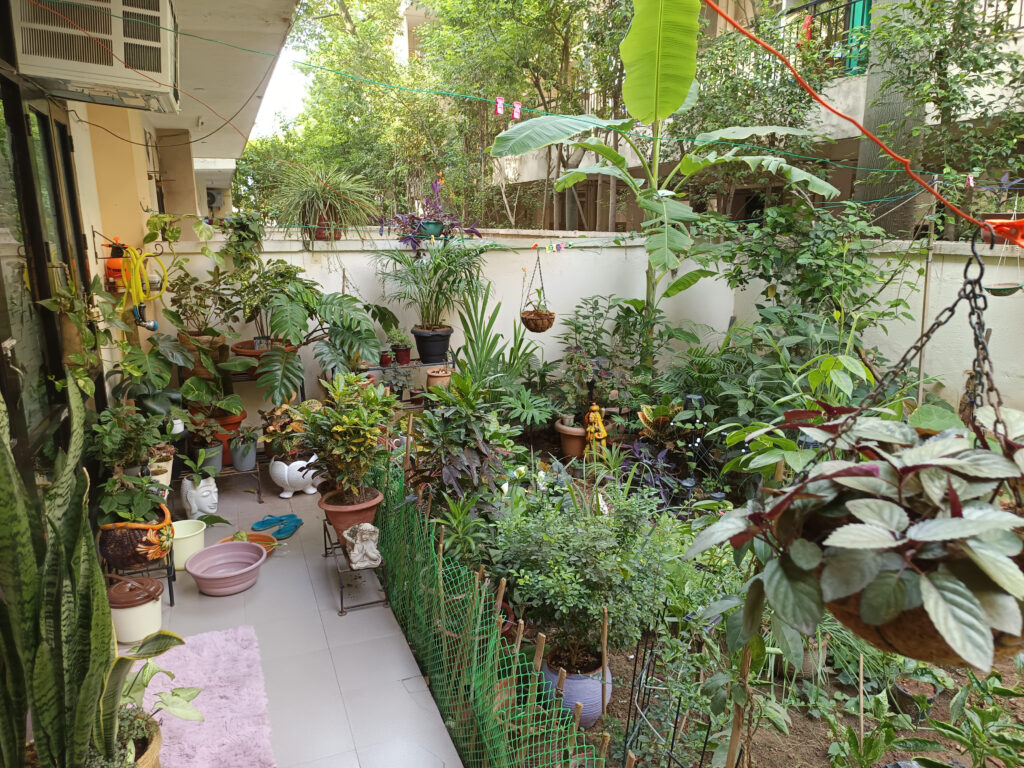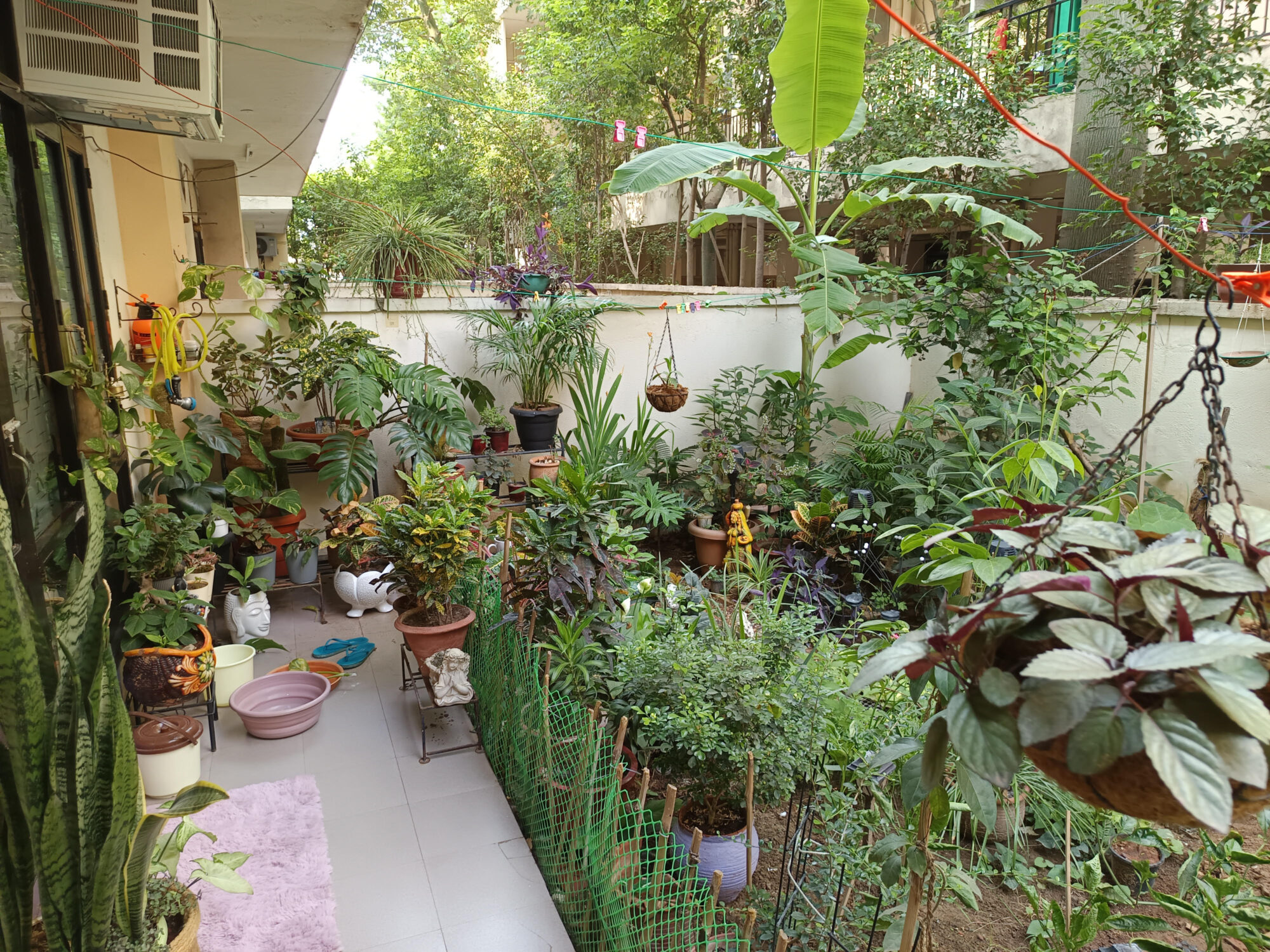Tips to save your plants from heat waves

Every plant loves the sun. It’s what nourishes them, helps them grow and blossom into what they are meant to be. But too much of sunlight without proper care be disastrous for them.
During the hot summer months, it can be difficult to keep the plants in your garden healthy, hydrated, and strong. Fortunately, there are several ways to keep your plants cool and properly hydrated. When the sun’s beaming down, protect your garden by providing adequate moisture and shade.
This easy tips will get your garden ready for summer and protect your plants from the harsh sun.
Hot weather :
1. Choose the Right Spot : When planting, put all those outdoor plants that require less water with those that need more water. That way, these two will create a miniature ecosystem that will be mutually beneficial. You can also pull out your outdoor potted plants from areas that receive a full day of sun and get them in corners that are shaded and don’t receive as much sun through the day.
2. Shade Nets for Plants : This is the most obvious and perhaps the easiest thing to do. A shade cloth is easily available commercially and it will do the job for you.
3. Water your Outdoor Plants in Early Morning : Watering plants before the sun gets hot ensures that a good water pressure is established before the heat gets to the plants.
4. Get Your Plants Some Mulch : Apply a thick layer of organic mulch — such as shredded leaves, straw, or coconut husk — around your plants to help retain soil moisture and suppress weed growth. Mulching also helps regulate soil temperature, keeping plant roots cool and protected from the heat of the sun. Be sure to replenish mulch as needed throughout the summer season.
5. Keep those bugs away : As the temperature rises, pests become more active and become a threat to our garden. Monitor plants regularly for signs of damage or infestation, and take prompt action to address any issues. Consider using natural or organic pest control methods — such as neem oil or insecticidal soap.
6. Snip the dead branches : Cutting or trimming parts of a plant — such as dead or diseased branches, leaves, or flowers — is an essential maintenance task in gardening. It can help promote plant health, encourage growth, and maintain the desired shape and appearance of plants during the summer.
Benefits of planting
1. Gardening can make you happier :
The act of growing plants may also help boost your mood. The 2017 meta-analysis also linked gardening with increases in quality of life and reductions in mood disturbance. This may have something to do with how it changes your outlook.
“The thing about gardening is that you have to have faith in the future,” Fried says. “Growing something green, something real, something alive, is a hopeful thing to do.”
2. Time in nature
Getting outdoors is good for your physical and mental health. People tend to breathe deeper when outside. This helps to clear out the lungs, improves digestion, improves immune response and increases oxygen levels in the blood.
3. Growing your own food can help you eat healthier
If you have a vegetable or herb or fruit garden, you’re getting fresh produce that you know hasn’t been treated with pesticides.
4. Gardening boosts mood:
Have you ever tried gardening and felt happy? Most of the people felt the same happiness. When you make time to go and work in your garden, your anxiety levels may decrease and you might start feeling less depressed. Gardening is also a form of exercise that can be good for you as it helps to release endorphins, the hormone that helps to make people feel satisfied and relaxed. Also, direct contact with sunlight can boost your mood.
5. Improve the quality of life:
Let’s make our life simple. Yes, simple things make your life much more beautiful than you think and gardening is one of them. A garden is the best place to notice the little things that are so important.
6. May lower the stress level:
Gardening is a stress buster that can help to lower your stress. It can help you recuperate and bounce back after a stressful event. Study results suggest the level of cortisol (stress hormone) may reduce through gardening.
7. Help to encouraging mindfulness:
Mindfulness helps to stabilize our mental state and helps to focus on the present moment. To achieve this mindfulness, many people try meditation and yoga. However, gardening is one of the best forms of meditation that will keep you happy.
One benefit of gardening is to dedicate your full attention to the task at hand. It makes you get lost in what you are doing and spend hours out in your garden, making sure everything is healthy.
8. May enhance the immune system:
You are like your plants; you both need sunlight. Your plants use sunlight to make their food through the process of photosynthesis. Your skin works in the same way by absorbing vitamin D while gardening. Vitamin D can help your body to absorb calcium. It helps to keep your bones strong and your immune system healthy.
9. Help to burn calories:
Gardening is a form of exercise and this is especially true if you have a large garden. Simple gardening for an hour daily can help to burn up to 330 calories. Gardening can be an ideal workout for someone who prefers low-intensity exercise.
The National Institute of Health recommends 30-45 minutes of gardening three to five times per week.
10. May strengthen your bones:
As you age, your bones will get weak and brittle. Your body levels of vitamin D and calcium start to drop. This is when your body requires more calcium and vitamin D. Regularly gardening can help to receive the maximum amount of vitamin D that keeps your bones healthy.
SOIL TYPES
6 Types of Soil for Plants:
Soil type is one of the most essential components in plant growth, and you can effectively grow plants or crops of your choice with the right soil. You want to ensure you choose soil that supports and enhances plant growth. Here are six common soil types for growing plants and crops:
1. Loamy Soil
Loamy soil comprises three soil types — clay, silt and sand — making it ideal for plant growth. Loam is rich, dark soil that can roll up in a firm ball and fall apart easily when touching it. The three soil type combination offers a fine and slightly damp texture that is excellent for growing plants and shrubs. Loamy soil provides the characteristics of silt and clay, is nutrient-dense and full of microorganisms that help your plants grow. Loam also retains moisture, has excellent drainage capabilities and is loosely packed, letting oxygen flow through plants.
While loam is ideal for plant growth, it can require some maintenance to ensure it remains nutrient-rich. You can add compost and organic matter like wood chips and mulch to help loam soil retain moisture and prevent drying.
Here are some plants and crops to grow in loamy soil:
Vegetable crops: You can plant most vegetables like sweet corn, carrots, onions and cucumbers.
Berry crops: You can plant berry varieties like strawberries, blueberries and blackberries.
Drought-tolerant ornamental crops: Sandy loam soil types like manzanita can help broad plant root systems easily absorb water as it is loosely packed and moist.
Flower crops: Flower crops like delphinium can grow in loamy soil, rich in moisture and nutrients.
2. Sandy Soil
Sandy soil is one of the most prevalent soil types in the world. Sandy soil can be light to golden brown and have a gritty or grainy texture like desert sand. You may also find large rock particles and other organic matter in sandy soil. Sandy soils warm up quickly in the sun and can be prone to water erosion in high-rainfall areas. Sandy soil can require organic fertilizer and organic matter like glacial rock dust, mulching and drip irrigation systems to help replenish the nutrients in heavy rain.
Here are some plants and crops to grow in sandy soil:
Root Vegetables: You can plant deep root vegetables like carrots and radishes.
Fruits: Strawberries and tomatoes are often grown in sandy soils.
Herb garden: Sandy soils can be ideal for growing herbs like thyme and rosemary.
Shrubs and bulbs: Hibiscus and tulips can thrive in sandy soil.
3. Peaty Soil
Peat soil is rich in dark brown or black and is made from high levels of decomposing organic materials or plant remains. The organic materials can contribute to high acidic levels slowing down composition but can improve alkaline soil conditions for plants that require higher acidity levels, like blueberries. Peat soil is high in natural moisture and can hold much water, giving it a spongy texture. You may have to install drainage systems to drain excess water from peat soil, especially in spring when soil temperatures are warm, causing more water retention.
Here are some plants and crops to grow in peaty soil:
Vegetables: You can grow legumes, salad crops, bulb onions, lettuce and various root crops like potatoes in well-drained peat soil.
Shrubs and trees: Shrubs like azalea and lantern trees can thrive in peat soil.
Grass crops: Grass is one of the main crops to grow on undrained peat soil.
4. Silty Soil
Silty soil is light brown soil similar to sand and has a light and smooth texture. While silty sand contains various rock particles and organic materials, it may also be prone to soil erosion in high-rainfall areas. However, you can plant multiple plants in silty sand as it can be easy to cultivate and can hold water better than sandy soil. Enhance the nutrients in silty sand by combining it with organic matter, green manures, and fertilizers. Installing a drainage system can also help you with excess water and improve the quality of silty soil for plant growth.
Here are some plants and crops to grow in silty soil:
Shrubs and trees: Various grass crops, shrubs and perennials like New Zealand flax can thrive in silty and trees that require more moisture like birch, willow and cypress.
Vegetable crops: You can grow vegetables like onions and lettuce in well-drained, silty soil.
5. Chalky Soil
Chalky soils are dark brown and contain numerous white or grey stones and rocks or limestone particles. It has a solid structure and is common in high-altitude areas. Silty soils with a limestone overlay are free draining and can be drought-prone in summer. The stoney soil type may require special fertilizers, humus, mulching and green manure like crimson clover to improve the pH balance and water retention. It is an alkaline soil leading to lower nutrient levels.
Here are some plants and crops to grow in chalky soil:
Vegetable crops: You can grow vegetables like cabbage, spinach and beets in chalky soil.
Trees and shrubs: Climbers, trees and shrubs like mock oranges and lilac.
6. Clay Soil
Clay soil is grey or brown and is a thick and lumpy soil type. It can shrink and crumble when dry and feels sticky when wet. Clay soil can hold more water than other soil types and has less drainage, which makes it drought-tolerant. You can grow plants in clay soil in summer when the soil is dry and if you have a sound drainage system. Clay soils can be high in moisture and nutrient-dense, aiding in healthy plant and vegetable crop growth.
Here are some plants to grow in clay soil:
Vegetable crops: Various summer crop vegetables, shrubs and fruit trees can thrive in clay soil as they offer high moisture levels.
Shrubs and perennials: You can grow shrubs like aster and flowering quince in clay soil.
Watering during hot summer
- Water plants a lot on a sunny day
- Water plants in the soil in the garden in the morning or evening
- Avoid watering in full sun
- Put potted plants in shade, or water several times a day
- Cold water from the tap is fine for plants
- Pay most attention to shade plants and those from cooler or damper areas which will be less adapted to the weather we are experiencing

